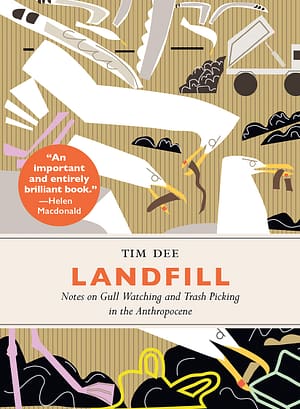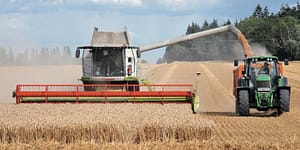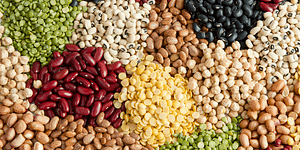Gulls: A Checklist for The Beginning of an Affair

Over the past hundred years, gulls have been brought ashore by modernity. They live not only on the coasts but in our slipstream following trawlers, barges, and garbage trucks. They are more our contemporaries than most birds, living their wild lives among us in towns and cities. In many ways they live as we do, walking the built-up world and grabbing a bite where they can. Yet this disturbs us. We’ve started fearing gulls for getting good at being among us. We see them as scavengers, not entrepreneurs; ocean-going aliens, not refugees. They are too big for the world they have entered. Their story is our story too.
The following is an excerpt from Landfill by Tim Dee. It has been adapted for the web.
I tried to give up birdwatching in my early twenties. The scene of my abandonment was a gull roost on a reservoir. From a hide on the banks of Chew Valley Lake, outside Bristol, I often watched gulls coming to land on the water to find a place to sleep. Many common gulls did this and occasionally one or more ring-billed gulls, vagrants from North America, who had got caught up on the wrong side of the Atlantic, came to rest with the regular crowd.
In the hide, if others were with me, there was a chance of picking out a ring-billed gull. But on my own I despaired and never managed anything. Thinking of what I was despairing about despaired me further. My wanting to see a ring-billed gull was stopping me seeing – the shakedown of thousands of birds arriving out of the dying light, and then the exquisite distribution of these white forms across the darkening water. I felt stupid to have misread the truth of the scene. I put away my binoculars for much of the next three years.
Before I quit I had seen most of the gulls then known in Britain. The gulls I grew up with were herring, lesser black-backed, great black-backed, black-headed, common and kittiwake. Along with ring-billed, the gulls I began as a teenager to look for and chase as rare birds were:
little, glaucous, Iceland, Mediterranean, Sabine’s, laughing Bonaparte’s, Franklin’s, Ross’s and ivory. Some are Arctic species; some are American.
In the recent past, revisions to our taxonomic understanding have released more gulls that might now be seen in Britain. Most notable among these are yellow-legged and Caspian gulls. There are also smaller numbers of other split species and assorted subspecies, races and hybrids, including American herring, Thayer’s, Baltic, Azorean, Viking, Nelson, and more with names still stuck in Latin. All are hard to see and few are easy to tell apart. Yellow-legged and Caspian gulls are the species whose observed presence in Britain has prompted new interest among birdwatchers in the family as a whole. They are also gulls that have been watched extensively on landfill sites. They are the birds that started this book.
The first rare bird of any kind that I found was a Mediterranean gull at Oxwich in the Gower. I was thirteen. My friend Richard was with me, and we wrote up a description of what we saw and had our bird accepted by the county recorder. Richard is dead now. The last time we spoke by phone, a few years ago, he was in the back of a car taking him to a business meeting. Forty years on, the gull was mentioned.
After the Mediterranean gull, I got serious and twitched other rares: an ivory gull at Chesil Beach in January 1980, an astonishingly polar-white bird; and before that two Sabine’s gulls at Sheringham on a wild autumn sea-watch; one laughing gull at Yarmouth (or was that a Franklin’s gull?); a Bonaparte’s somewhere, perhaps in Cornwall. I should check my notebooks, except I wasn’t a good diarist then, especially not on the chase, when everything in front of me was too exciting to be captured by standing to one side of it and writing it down. Besides, I was intimidated by my fellow birdwatchers: the beautiful lifelike sketches of Laurel Tucker, who was often in the front seat of the car we shared from Bristol to get to the target bird, and who is dead now too; or the meticulous counts and annotations of Antony Merritt, who wrote in pencil and then sprayed his pages with fixative to preserve his lists, and who now is sick and has been, for decades, cruelly confined indoors.
It was a gull that also got me back into birdwatching.
I worked for a time in bird conservation after I left university. For three years birds were my day job, and usually that left me wanting to do other things when I wasn’t at work. But the lure of some species never dims. An adult Ross’s gull – a remarkably pink bird – arrived in Norfolk in May, 1984, and my boss, Nigel Collar (more from him later), was similarly surprised by his resurgent appetite; he drove us to collect the prize at Titchwell where it sat like a melting raspberry-ripple ice cream on a muddy island.
Only in the past decade or so has a subgroup of birdwatchers interested in gulls been visible. Some say they are going gulling; others call themselves larophiles (Laridae is the Latin name for the gull family; Larus for the genus that includes the large gulls). When I spotted this new interest I wondered how and why some of my gang had fallen in so deeply with one family of birds not much regarded by other birdwatchers and often derided by non-birding people. It was striking, too, that most often this new attention was being paid in the towns and cities where most of us live, and the dumps where we discard the leftovers of our living. There are two
reasons, it seems, why gulls have loomed as large as they have: first, simply, gulls were newly nearer and more visible to most birdwatchers than other birds; and – more complicatedly – taxonomic changes had magicked more birds for us to see.
This book tries to unpick this story: how, over the past one hundred years, gulls have made their way among us in a man-made world and how, more recently, various people have met them there. But it is not a book of natural history or of anthropology. My real interest is in exploring what these facts of gull-life and gulling-life have done to our minds. To do this I have watched the birds themselves in the company of people who know a lot about them, but I have also read poems, plays and novels, and seen films and grappled with philosophical essays that have all found reasons to be concerned with gulls.
Studying both organising (which could include bird systematics and the recycling of rubbish) and disorganising (anarchic bird lists and chaotic dumps), and then the organization of the disorganized (revisions to avian taxonomies and to the categories of rubbish), took me to thoughts that weren’t about gulls, or even birds, and there are pages here that have nothing flying through them. Forgive me for that, but trust me that it was gulls that led me there.
All this that follows then, is to try to discover what I think of these birds, and how all of our thinking has shaped the way we know them; all this, to ask how changing the way we consider an animal might alter its meaning.
At first, I thought writing about this might describe an impoverished experience: birders turning to gulls because they are the only birds around. I also thought watching the watchers and the watched might be melancholic, or darkly funny: men leaving their homes and their families to spend time peering at arsey birds in some of the arseholes of the world. There is a bit of this, but it turns out more substantially that the meeting of gulls and people is exuberant. It has an excess that could be called joyous.
As the birds worked our utility places and our waste, I saw that birders were processing the gulls, picking through them, finding new things to know and to understand, finding value in creatures otherwise labeled shoddy or dreck. That means, though the gullers don’t often admit it, new things to love. This enthusiastic organizing of life (an action potentially lovable itself) in the midst of the organizing of what we could call death (the sorting and rendering of our waste) is gripping.
Landfill means more than just a tip for the end of things. It is also a description of how we have worked the rest of the living world, learned about it, named and cataloged it, and have thus occupied or planted our planet, filling the land.
Recommended Reads
Recent Articles
Oxeye daisies are one of the most important plants for pollinators including beetles, ants, and moths that use oxeye daisies as a source of pollen and nectar. Instead of thinking about removing a plant like oxeye daisy, consider how you can improve the fertility and diversity of habitat resources in your home landscape, garden, or…
Read MoreThis long-lived perennial legume is used for forage and erosion control. Kudzu is edible with many medicinal uses and other applications. Pollinators of all kinds love its prodigious lavender blooms!
Read MoreMove aside, maple! We have two new syrups to add to the table. Read on for insights on tapping, selling, and eating syrup from walnut & birch trees.
Read MoreWhy is modern wheat making us sick? That’s the question posed by author Eli Rogosa in Restoring Heritage Grains. Wheat is the most widely grown crop on our planet, yet industrial breeders have transformed this ancient staff of life into a commodity of yield and profit—witness the increase in gluten intolerance and ‘wheat belly’. Modern…
Read MoreDid you ever wonder how leeks, kale, asparagus, beans, squash, and corn have ended up on our plates? Well, so did Adam Alexander, otherwise known as The Seed Detective. The following is an excerpt from the The Seed Detective by Adam Alexander. It has been adapted for the web. My Seed-Detective Mission Crammed into two…
Read More









